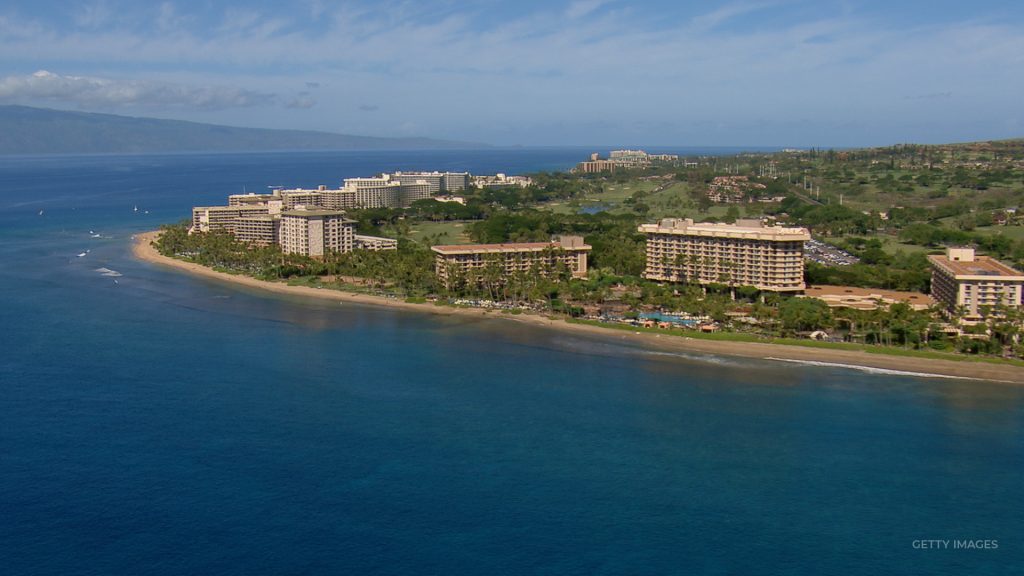Maui County proposal would turn vacation units into long-term rentals

For years, an ever-looming housing crisis has grown in the Hawaiian Islands. That threat came to a head in 2023, when a firestorm leveled the old capital of Lahaina on the island of Maui. Thousands found themselves without homes or jobs. In the wake of the disaster, many called for the government to force short-term vacation rentals used by tourists to be flipped into long-term rentals for locals.
The debate over changing vacation rentals is being brought to the forefront as the Maui County Council’s Housing and Land Use Committee prepares to examine a proposal by Maui County Mayor Richard Bissen.
A new legislative push
“Every day, local families are being forced to leave the only home they’ve ever known,” Bissen said at the state of the county address in March. “Maui’s housing market has become increasingly out of reach, a crisis worsened by the events of August 8, leaving thousands of displaced survivors still in need of permanent homes. But this issue extends beyond disaster recovery — it’s about our future.”
The proposal, Bill 9, plans to phase out units rented out for less than 180 days, known as transient vacation rentals (TVRs), in apartment-zoned districts by 2026. That change would see units targeted from what is called the “Minatoya list.”
Named after the Maui County official who created the legal memo giving TVRs an exemption in 2001, the Minatoya list contains the addresses of over 7,000 rental units. About 6,000 of these units are actively used as short-term rentals.
Housing in Maui County
These units make up more than half of the total legal vacation rentals in Maui County, which, according to a 2024 UHERU factbook, number 10,084, or 14% of the total housing stock. The Minatoya list units were grandfathered in as legal short-term rentals in apartment zones, since they were operating as such by April 20, 1989, when the county passed an ordinance limiting TVR permits in such areas. Most of these units are in South and West Maui, and the vast majority are owned by out-of-state residents.
For years, these properties have operated in apartment zones as short-term rentals, while locals struggle with increasingly higher costs of living and a housing shortage in the Aloha State. Over half of Maui residents are “rent-burdened,” spending over 30% of their household income on rent, and over a quarter of residents are “severely rent-burdened” from spending more than half of their income on rent, according to the factbook. The growing crisis was compounded by the 2023 fires, which destroyed more than 2,200 structures, according to the county’s after-action report.
Can the bill help?
Mayor Bissen and others are hoping that Bill 9 opens up affordable living spaces for locals, but the late-March reveal of a University of Hawaiʻi analysis on the proposal points out some cracks in the plan.
The analysis’s UHERO authors found that the policy, as it currently reads, “would have far-reaching economic effects, with both intended benefits and unintended consequences.”
Unbiased. Straight Facts.TM
The Lahaina wildfires in 2023 destroyed 2,173 structures, killed 102 people, and displaced around 12,000 people. Today, the island of Maui is still struggling to recover.
Those possible effects are broad, and include a $900 million annual drop in visitor spending and potentially 1,900 lost jobs.
Maui has a heavy reliance on visitor spending to support its economy, as illustrated in the analysis’s background. The leisure and hospitality sector employed 22,600 people in 2022, just over a quarter of the island’s total labor force. That same year visitors, excluding those who arrived via cruise ship, spent nearly $6 billion. The potential drop in visitor spending theorized by UHERO would have a large impact on the local economy.
“It’s important to recognize that economic models — while helpful — cannot fully shape the future of our communities,” Mayor Bissen said in a statement sent out to local media responding to the analysis. “They do not reflect the lived experiences of our residents: the families crowded into multigenerational homes because younger generations can’t afford their own, the workers commuting longer distances or leaving Maui entirely, and the growing strain on our infrastructure and sense of place.”
Potential improvements
The authors of the analysis proposed some adjustments to the policy to soften the economic side effects:
- Gradual implementation: extending the transition period and phasing out TVRs slowly in smaller increments or geographic areas instead of two large phases.
- Lottery-based phase out: randomly selecting a subset of properties each month for transition over a 12-month period for more precise management of inventory levels.
- Rezoning or special use permits: allowing limited TVR use to continue in designated areas where it aligns with long-term planning goals.
Compromise on the bill
Shortly before the analysis was released, Mayor Bissen had walked back some of his previous statements in a South Maui community meeting.
“They were intended for workforce housing. They were built for workforce housing, and they became short-term rentals,” Bissen said. “If that was built to be a workforce housing, my goal is to convert those back to workforce housing. That’s the simple answer.”
The complicated answer is that only about 2,000 of the units on the Minatoya list meet that qualification, curbing the mayor’s earlier promise. It’s a compromise for the residents of Valley Isle, both those looking for places to live and those who are renting to tourists.
Other plans to boost housing
But flipping vacation rentals isn’t Maui County’s only hope for local housing. Mayor Bissen has other plans in place that he hopes will help residents find a place to call home.
“At the state level, Governor Green, Lt. Governor Luke, and Maui County’s state senators and representatives are pushing to cut red tape, invest in housing stock, and strengthen infrastructure,” Bissen said at the state of the county address. “Here at home, I’m working with our county council to explore public-private partnerships, inclusionary housing policies, tax incentives and use and deed restriction programs.
“These are just a few of the critical efforts underway — but true change will take all of us,” he continued. “Tough decisions lie ahead — and while change requires sacrifice, the long-term future of our people depends on it.”
The bill is expected to be considered before the Maui County Council Housing and Land Use Committee in mid-May or early June. Sessions will be held in the evening to allow as many locals as possible to bring their testimony before the committee and have their voices heard.
Timeline of events
- 1989 – The Maui County Council enacted Ordinance 1797, removing short-term rentals from properties in apartment zones to ensure the intent of the apartment district for long-term residential use.
- 2001 – Richard Minatoya, a Maui County official, created an exemption list of properties in apartment zones that continued operating as short-term rentals. This became known as the Minatoya list.
- Aug 8, 2023 – The Maui wildfires destroyed more than 2,200 structures, killed 102 people, and left thousands without work or homes.
- May 2, 2024 – Maui County Mayor Richard Bissen announced a plan to take the Minatoya list and convert the still existing/operating short-term rentals, about 6,000 units, into long-term rentals for residents.
- May 3, 2024 – Hawai’i Gov. Josh Green, D, signs Senate Bill 2919, granting counties control over regulating short-term rental properties.
- March 12, 2025 – Mayor Bissen lowered the exact number of short-term rental units to be flipped in his proposal at a South Maui community meeting, now closer to 2,000 units.
- March 31, 2025 – The University of Hawai’i released an analysis of the proposal to phase out transient vacation rentals in Maui County apartment districts. This paper pointed out unintentional consequences of the proposal as written, which could result in lost jobs and revenue for the county.





